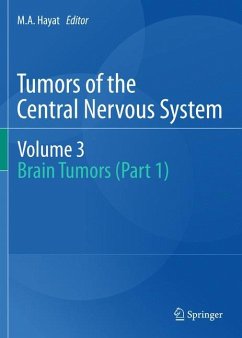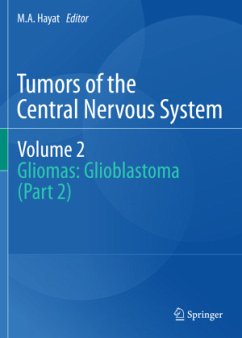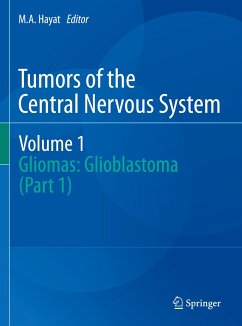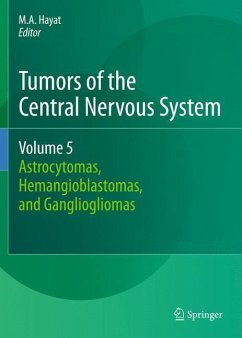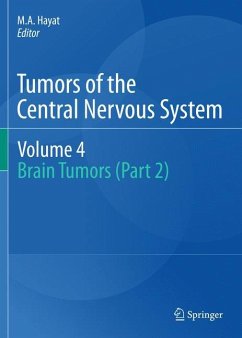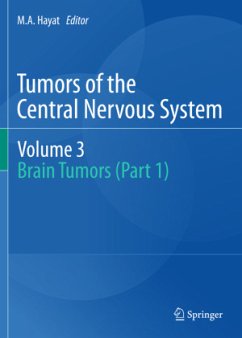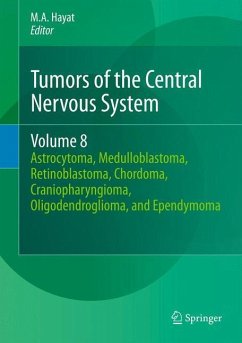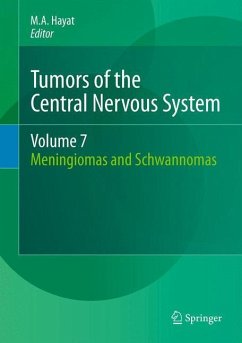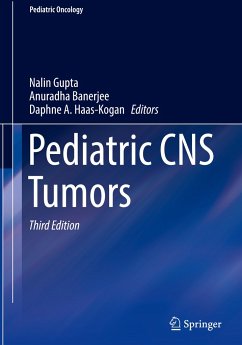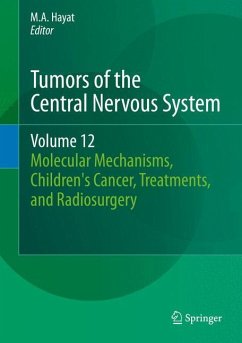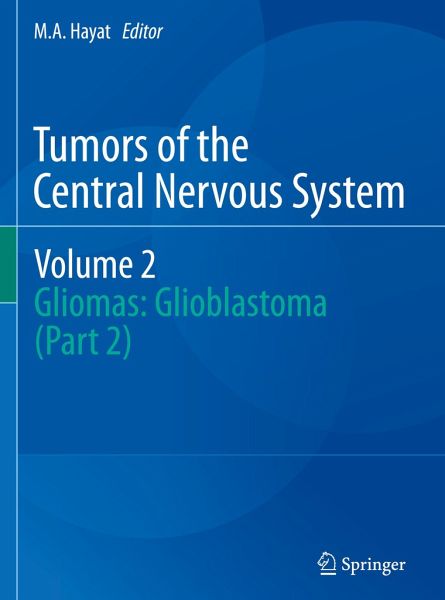
Tumors of the Central Nervous System, Volume 2
Gliomas: Glioblastoma (Part 2)
Herausgegeben: Hayat, M. A.

PAYBACK Punkte
76 °P sammeln!
Advantages and limitations of biomarkers in gliomagenesis are described. Molecular subtypes of gliomas are detailed. The role played by TP53 gene mutation in the deadliest brain tumor, glioblastoma multiforme, is pointed out. The role of mutations of IDH1 and IDH2, and isocitrate dehydrogenases in malignant gliomas are presented. Metabolic differences in different regions of the glioma tumor are clarified. Various types of imaging modalities, including PET and SPECT, to diagnose gliomas in general and glioblastoma in particular in patients are explained in detail. Both low-grade and high-grade...
Advantages and limitations of biomarkers in gliomagenesis are described. Molecular subtypes of gliomas are detailed. The role played by TP53 gene mutation in the deadliest brain tumor, glioblastoma multiforme, is pointed out. The role of mutations of IDH1 and IDH2, and isocitrate dehydrogenases in malignant gliomas are presented. Metabolic differences in different regions of the glioma tumor are clarified. Various types of imaging modalities, including PET and SPECT, to diagnose gliomas in general and glioblastoma in particular in patients are explained in detail. Both low-grade and high-grade gliomas are discussed. Conventional as well as fluorescent-guided resection techniques for high-grade, recurrent malignant gliomas are detailed. Impact of resection extent on outcomes in patients with high-grade gliomas is clarified. The advantage of the use of intraoperative low-field MRI in glioma surgery is explained.



